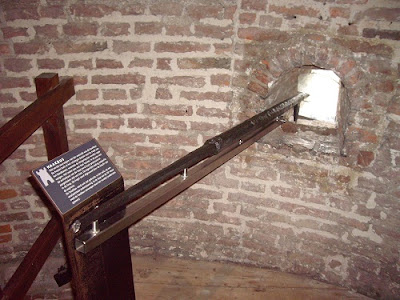We often hear that medieval guns were crude, inaccurate, and generally ineffective. One common mantra is that they were more dangerous to the wielder than the target. Yet one has to ask, why did armies across Europe incorporate them into their arsenals starting in the 14th century and keep using them until they eventually replaced the longbow and crossbow? Obviously early firearms had something to offer. But what?
When I started researching my book Medieval Handgonnes: The First Black Powder Infantry Weapons, I was shocked that there was no other book written in English on the development of the gun before the matchlock. I found no books in any other language either. Guns are, after all, one of the most important inventions to come out of the Middle Ages. Until very recently historians just accepted the image of crude early handgonnes without testing it or even really thinking about it. While this made my research extra difficult, it also made it extra rewarding.
 |
| Western Europe, 1390-1400. Courtesy PHGCOM |
When I say "handgonne" I mean a handheld black powder weapon fired with a match or hot wire. There was no trigger, no automatic firing. Pretty primitive stuff! "Handgonne" was only one of many terms used in that era.
In recent years reenactors and archaeologists have experimented with medieval recipes for gunpowder and tested replicas handgonnes. They've found these weapons could punch through armor better than a longbow or crossbow, although they have a much shorter effective range. Scholars have long debated how effective a longbow arrow is against plate armor. Many believe arrows had more of a harassing effect, with lucky shots getting into eyeslits, joints, or hitting horses. The escape velocity of the bullet was higher, making it more effective, but since it wasn't as aerodynamic as an arrow it lost velocity pretty quickly. Accuracy was better than people assume. Skilled reenactors can hit a man-sized target most of the time even at 45 meters (49 yards). Since men generally fought in large, compact masses, this made them even easier to hit.
 |
| This 15th century hackbut ("hooked gun") braces against a loophole and crossbeam at Muider Castle, The Netherlands. Photo by Sean McLachlan |
Of course longbows and crossbows had better range, speed, and accuracy. In medieval illustrations you often see bowmen and gonners standing together. This capitalized on the advantages of both weapons while negating the disadvantages. As the enemy advanced they were harassed by the bowmen and when they got in close got cut down by the gonners.
Handgonnes truly came into their own in the 15th century, as improvements in gunpowder production made them more powerful and cheaper. Soon the ratio of guns to bows tilted in favor of the gun. While crossbows and the English longbow lasted on the battlefield for some time, the development of the matchlock in the late 15th century heralded a new era in warfare.

Very interesting. It made me wonder where you were able to find the information you needed when you did the research.
ReplyDeleteSharon
http://grandmaisawriter.blogspot.com
Noting that when the Mary Rose wreck was raised in 1982 138 longbows and more than 3500 arrows were found aboard, it seems that rate of fire was the tipping point in bow vs gonne. How long did it take a gonner to reload; what was the extent of their training/competence; and who was the master gunner for the infantry, who prepared the powder?
ReplyDeleteFascinating! Thanks for sharing this. I love to learn all sorts of things. Never know when I'll need it for a story! :P
ReplyDeleteSharon: My main sources were various academic articles and experiments done by archaeologists and reenactors. Also, bits and pieces about handgonnes were spread out in various books about early cannon, the history of science, and military history. I also visited a lot of museums in Europe to examine the weapons firsthand.
ReplyDeleteChristopher:
ReplyDeleteRate of fire varies with the type of gonne and the gonner. One shot a minute seems average among reenactors. This is why they were mixed in with the archers. Matchlocks were quicker to reload, up to twice a minute.
There's no hard data on the training of early gonners, but since their weapons were relatively cheap, they probably got to practice a fair amount.
The master gonner was often the same person who oversaw the artillery, which was developing at the same time. Gonners tended to prepare their own powder since if it was mixed too strong it could burst the barrel and if it was too weak it would leave them defenseless!
Gloria: if you need a proofreader for an early handgonne story, I'd be happy to help!
ReplyDeleteHi all
ReplyDeleteI am part of a reenactment group specializing in 14th century handgonnes (www.albrechtsbossor.wordpress.com). Our best shot can fire four shots per minute, and not even the worst of us can fire less than three. Practice makes perfect :)
do choi nguoi lon
ReplyDeleteđồ chơi người lớn
xit keo dai thoi gian